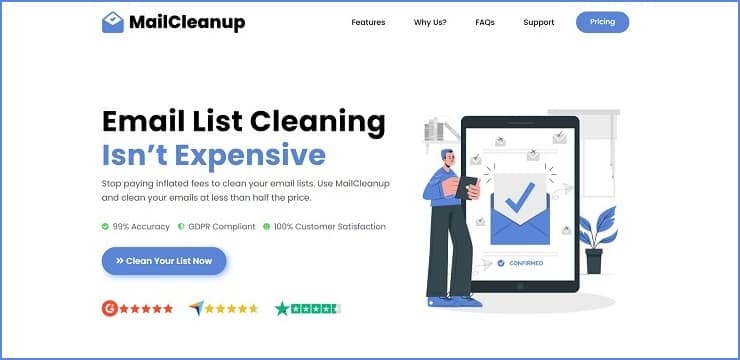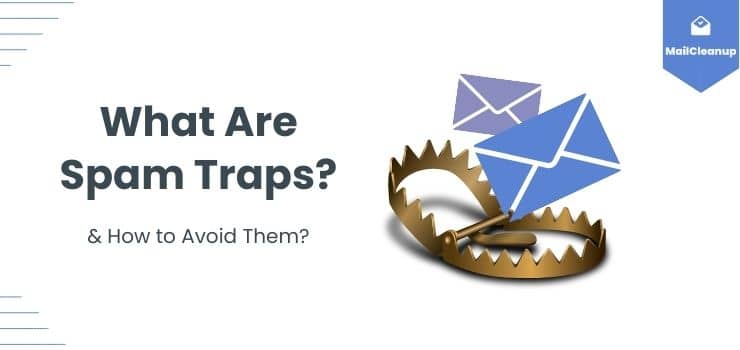Are you looking to learn what are spam traps? If so, you have arrived at the right blog post…
There’s a huge amount of spamming on our website that will cause you more headaches and frustration with your email marketing campaign. The use of spam detection techniques is becoming increasingly important to catch the spammer.
Spam traps are now very important for email marketing companies and all the email companies that send large amounts.
This article discusses the most commonly asked questions regarding spam traps. Here are some basic questions we should consider.
What Are Spam traps?

Spam traps are email addresses that are used by ISPs (Internet Service Providers) to detect and catch spammers. Spam traps are usually old email addresses that have been inactive for a long period of time, or email addresses that have been purposely set up by ISPs to catch spammers.
Spamtraps are typically bot emails that use email honeypots to collect spam. It’d be better to catch emails and spam messages from spammers rather than sending emails to you.
Spammers are not publicly available or directly visible on the web. These spammers or malicious senders use a web crawler to gather email addresses and sell them to companies for profit. Many web browsers have a hard time determining whether they are real spam or hidden spam traps.
What Are Different Types Of Spam Traps?
Spam traps exist in three types – typo, recycled, and pristine
Typo Spam Trap
Typo spam traps are email addresses that were likely mistyped by the sender. They may be one letter off or have an extra letter added. For example, [email protected] when it should be [email protected]
Recycled Spam Trap
The next type of trap is a recycled spam trap. This trap consists of addresses that were once active and then became inactive for a certain period of time or were abandoned by their owners.
Internet service providers will often recycle these addresses to detect spammers who are sending emails to them. Spammers often send messages to these old addresses in an attempt to get responses from people who may have forgotten about the account.
If a message is sent to a recycled address, it can be identified as spam and filtered out before it reaches its intended recipient.
Pristine Spam Trap
These are email addresses that have been created by ISPs specifically for the purpose of catching spammers. These addresses are never made public and cannot be guessed by spammers. The only way that a pristine spam trap enters your emailing database is if you have purchased an email list.
It’s important to know that ISPs do not have any idea or clue if you have asked your email subscribers to send the email campaigns. This is because it is difficult to find proof of permission for pristine spam traps since they’re never actually registered to receive mail. These usually get triggered by senders who purchase email lists.
What Is The Purpose Of Spam Traps?
The main purpose of spam traps is to identify and eliminate spammers from sending emails to users.
ISPs use these traps to detect when an email is sent from an unauthorized source, or if the sender has purchased a list of email addresses and sent out bulk emails without permission.
This helps protect users from receiving unsolicited emails, as well as protecting the sender’s reputation by being associated with spammers and their illegitimate email marketing tactics.
Additionally, it also helps ISPs better understand user behavior and trends in order to improve their services.
How Do Spam Traps Work?
Spam traps work by monitoring email activity and identifying when a message is sent from an unauthorized source or a purchased list.
When the trap detects an email, it will send back an automated response to the sender that includes a notice that the email was detected as spam and should not be sent again.
In some cases, the ISP may also take further action such as blocking the sender’s IP address or blacklisting their domain name.
It’s important to note that spam traps are only effective if they are set up correctly, so it’s important to ensure that your list is scrubbed of any bad addresses before sending out any emails.
How Serious Is A Spam Trap For A Business?
A spam trap can be extremely damaging to any and all kinds of business.
If you send emails through spam filters you will be deemed blacklisted. It may be possible to get an ISP to delete email addresses and blacklist your website’s domain name and IP address as well.
Recycling and typo-based spam traps are less dangerous but may damage the sender’s reputation in the long run and decrease deliverability. If the filtering program detects the sending of emails to a spam catcher, emails may get pushed into the spam folder or may be returned as spam.
Who Creates And Maintains Spam Traps?
Spam traps can be controlled through DNS BBL, antispam agencies, anti-spam organizations, or Internet service providers (ISPs).
Spam traps are created and maintained by these organizations to help identify and prevent malicious emails from entering a user’s inbox. DNS BBLs are used by ISPs to block IP addresses that have been identified as sources of malicious or unwanted emails.
Antispam agencies, such as Spamhaus, maintain extensive databases of known spammers and their email addresses. ISPs may also create their own spam traps to help protect their customers from unwanted emails.
How Do I Avoid Spam Traps?
As email marketers, the primary motive should be to collect email addresses through an opt-in form. This gives you complete control of your emailing list. At the same time, you have a general idea of where the subscribers are coming from.
Besides this, there are certain guidelines to be followed in order to avoid hitting a spam trap…
1. Use An Email Verifying Service
The best way to avoid spam traps is to keep your list clean by removing any inactive or invalid email addresses from your list. We, at MailCleanup, offer one of the best email verification services to all kinds of users.

Our email verification process consists of 20+ proprietary methods to remove invalid and expired email addresses. At the same time, we also remove duplicate email addresses from your list. Furthermore, our software is also capable of identifying email addresses belonging to greylisted and toxic domains.
Lastly, we are also the most affordable email verification service in the market.
2. Use Double Opt-in While Capturing Email Addresses
Besides this, make sure you only send emails to people who have opted-in to receive emails from you.
Lastly, you should make sure that when sending out emails, they are personalized and contain valuable content that the recipient finds relevant.
3. Never Purchase Email Lists
Another thing you should never do is purchase email lists from third-party vendors. This is because it will not only lead to a high bounce rate but also lead to your emails ending up in the spam folder of your recipients.
Moreover, it can also result in getting your IP address and domain blacklisted by ISPs. Thus, it is best to only send emails to people who have explicitly opted-in to receive emails from you.
4. Use A Reputable Email Marketing Service
It is important to use an ESP (Email Service Provider) that has a good reputation and can help you manage your list properly.
Moreover, it would be best for you if you use a reputable email service provider that is compliant with anti-spam regulations and has strong anti-spam filters.
More often than not, non-recognized ESPs sometimes have IPs that are already blacklisted. If you use these ESPs, you are risking your domain as well to get blacklisted or marked as a potential spammer.
Closing Thoughts
In conclusion, you should never purchase email lists from third-party vendors as it will not only lead to a high bounce rate but also lead to your emails ending up in the spam folder of your recipients.
Moreover, it can even get your IP address and domain blacklisted by ISPs. Therefore, it is best to only send emails to people who have explicitly opted-in to receive emails from you. Additionally, you should use an ESP (Email Service Provider) that has a good reputation and can help you manage your list properly.
Along with this, you must use an email verifier tool from time to time to identify spam traps. On top of this, the software will also remove invalid and expired emails to maintain your email list hygiene.
Now that you have learned what are spam traps, here are a couple of relevant blog posts that you can read –
